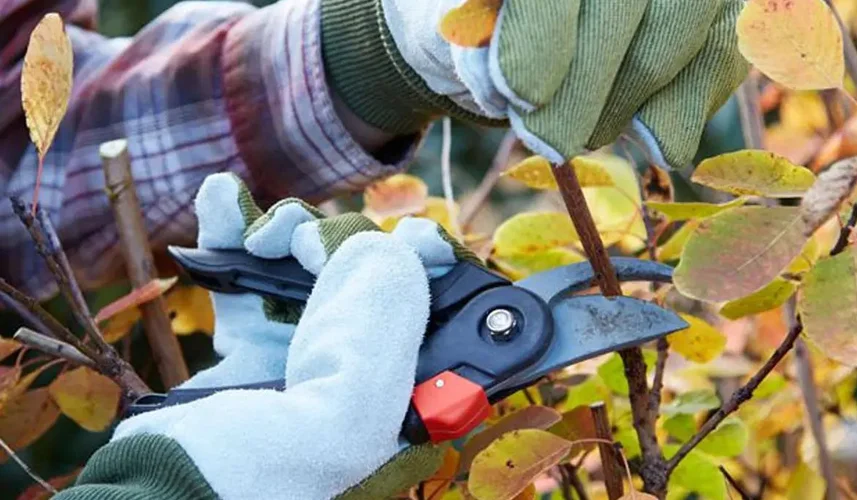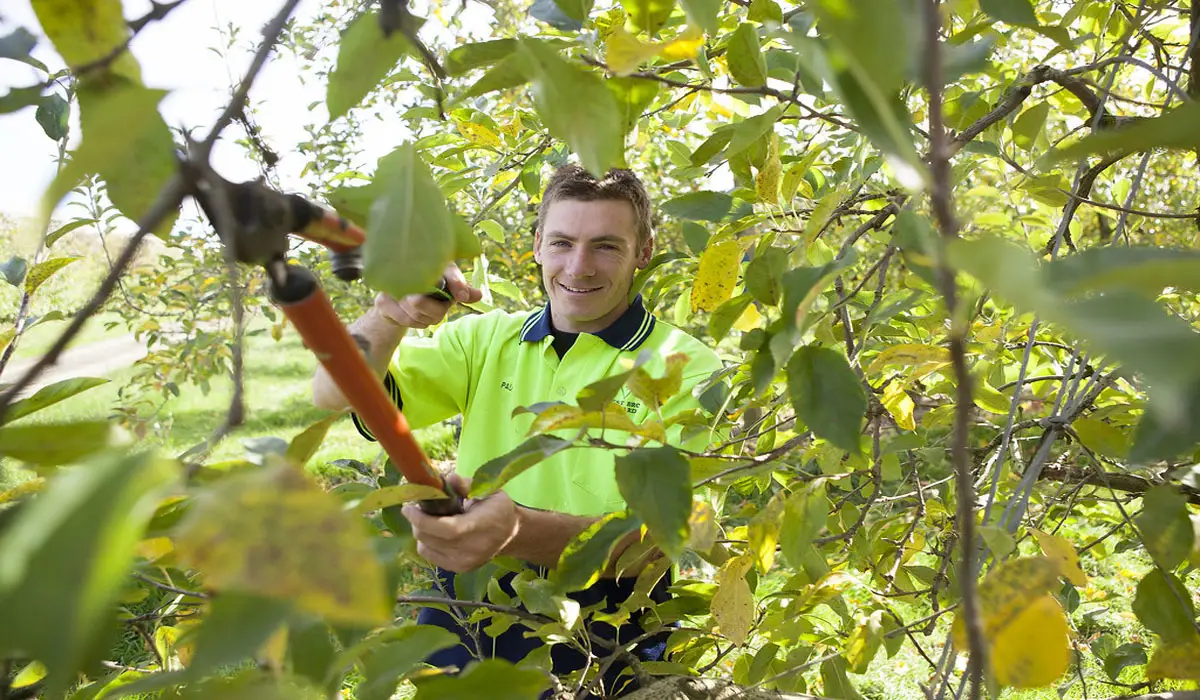
The Art Of Professional Tree Pruning: Best Practices
The Best Ways to Do Professional Tree Pruning
In arboriculture, tree pruning combines creativity and scientific precision to ensure tree health and beauty. Our commitment is to preserving trees’ longevity and aesthetics, with each trim focused on protecting their structural integrity using advanced tree health diagnostics. White Oak Tree Care offers tree pruning and tree preservation strategies for those who want excellent landscaping.
Discover the transformative power of combined knowledge in our seasonal tree maintenance programs to establish thriving ecosystems. Discover our services and let us maximize your trees. Contact us at (630) 520-2690 for a quote and see the difference professional tree pruning makes.
Understanding the Importance of Professional Tree Pruning
Professional tree pruning is required to keep trees in good health, safety, and aesthetic condition. Pruning promotes healthy growth by removing dead, diseased, or structurally weak branches.
• Enhancing Tree Health
To promote healthy growth and prevent pathogens, expert tree pruning removes dead, diseased, or damaged branches. Pruning increases airflow and sunlight, reducing fungal and pest infections. It helps trees withstand storms and environmental stresses by promoting a strong, balanced structure. This method improves tree health and appearance, keeping them in the landscape.
• Mitigating Safety Risks
To lower safety risks, professional tree pruning involves cutting off dangerous branches that could fall and hurt or damage someone. Some dangerous limbs that hang over during storms or high winds can be cut off by pruning. Pruning makes the area safer by getting rid of these potential threats, keeping people and property safe from harm.
Utilizing Tree Health Diagnostics Techniques
Tree health diagnostics includes comprehensive assessments to determine the overall health of trees. These techniques allow for targeted and effective pruning strategies by identifying problems such as pest infestations, diseases, and nutrient deficiencies.
• Comprehensive Tree Assessments
Before embarking on any pruning project, we conduct thorough tree health diagnostics to assess the overall condition of your trees. Using a combination of visual inspections, soil tests, and advanced diagnostic tools, we identify any underlying issues such as pest infestations, diseases, or nutrient deficiencies. This allows us to tailor our pruning approach to address specific concerns and promote optimal tree health.
• Targeted Pruning Strategies
With targeted pruning strategies, pruning methods are changed to meet the specific needs of the tree, like getting rid of diseased branches or shaping the canopy to let more airflow through. Tasked pruning helps trees grow healthily and improves their overall structure by focusing on what each tree needs. This way of pruning makes sure that the work is done quickly and correctly, which improves the tree’s health and appearance.

Setting Pruning Objectives
Set pruning goals for each tree, such as improving appearance, encouraging growth, or reducing safety hazards. These objectives tailor the pruning process to the tree’s needs and goals.
• Enhancing Aesthetics
Improving the look of a tree through skilled tree pruning means carefully shaping and trimming the tree to make it look better. Pruning gets rid of branches that aren’t growing right or are too big or too small. This makes the canopy more balanced and attractive. Not only does this process bring out the tree’s natural beauty, but it also fits in better with the rest of the landscape, making the whole place look better.
• Promoting Long-Term Health
Professional tree pruning promotes long-term health by removing dead, diseased, or weak branches, allowing for strong, healthy growth. Pruning prevents disease and pest infestations from spreading while also improving the structural integrity of the tree. This proactive care ensures that trees thrive for years, reducing the need for future interventions and contributing to a sustainable, healthy landscape.
Implementing Tree Preservation Strategies
The goal of tree preservation strategies is to maintain and protect trees, particularly in challenging environments such as construction sites. Techniques like structural support systems and careful planning help to keep trees healthy and stable, preserving their long-term vitality.
• Tree Preservation Identification
Identifying trees that require preservation measures entails inspecting them for signs of stress, disease, or structural weakness that could jeopardize their survival. Arborists use factors like age, species, historical significance, and environmental conditions to determine which trees require special care. Recognizing these trees early allows for the implementation of appropriate tree preservation strategies to protect and maintain their health and longevity.
• Preservation Methods for Trees During Construction
Use tree preservation strategies during construction to protect trees from damage or stress. By installing protective barriers, limiting soil compaction, and pruning for clearance, construction can reduce its impact on trees’ root systems and health. Planning and implementing these preservation measures can help trees coexist with development projects and preserve their vital role in the landscape for future generations.
• Tree Stability Improvement with Structural Support Systems
Structural support systems are essential to tree preservation strategies to prevent structural failure. Cabling and bracing stabilize trees with weak branches or trunks. By reinforcing weak points and redistributing stress, structural support systems prevent limb breakage and tree collapse, extending tree life and improving safety. This proactive approach preserves valuable trees and their landscape contributions for years.

Understanding Tree Biology and Growth Patterns
Effective pruning requires knowledge of tree biology and growth patterns to determine where and how to prune. Pruning promotes healthy regrowth and reduces stress by understanding a tree’s growth habits and responses to cuts.
• Tailoring Pruning Techniques
Tailoring pruning methods to tree needs is essential for seasonal tree maintenance programs. Arborists choose the best pruning method for each tree based on species, growth patterns, and goals. Whether it’s shaping the canopy for optimal growth or removing deadwood for health, tailored pruning techniques help trees thrive year-round. This personalized pruning method maximizes benefits while minimizing tree stress, promoting long-term health and vitality.
• Minimizing Stress
Professional tree pruning reduces stress to maintain tree health. Arborists can reduce tree stress by pruning carefully and timing. Avoiding excessive pruning or pruning during environmental stress reduces tree decline and promotes healthy regrowth. Post-pruning care, such as hydration and pest and disease protection, reduces stress and aids tree recovery. This proactive approach keeps trees healthy and resilient for years.
Incorporating Seasonal Tree Maintenance Programs
Customized seasonal tree maintenance programs meet trees’ seasonal needs. These programs improve tree health and landscape resilience by adapting pruning and pest management to seasonal changes.
• Winter Pruning
Winter pruning is essential to seasonal tree maintenance programs for tree health and vitality. Pruning is best during dormancy when trees are less stressed. Winter pruning stimulates spring growth and maintains the tree’s structure and health by removing dead, diseased, or overgrown branches. Since many species are less active in winter, pruning reduces disease spread and wildlife impact. It is also part of a comprehensive maintenance plan that keeps trees healthy and resilient year-round.
• Summer Maintenance
In seasonal tree maintenance programs, summer maintenance shapes and maintains trees during the growing season. Summer maintenance optimizes growth and aesthetics, while winter pruning addresses structural issues. Arborists can remove excess growth or shape trees to improve their appearance. Summer is also a good time to check trees for stressors like dehydration and pests and treat them. Summer maintenance helps trees thrive year-round.
We are more than just an arborist— at White Oak Tree Care we’re stewards of the natural world, dedicated to preserving the beauty and health of your trees. With our expertise in tree pruning, advanced tree health diagnostics, and commitment to best practices, we’re here to ensure your trees thrive for generations to come. Visit our website to learn more about our services or contact us at (630) 520-2690 to request a quote today and trust us to care for your trees.
